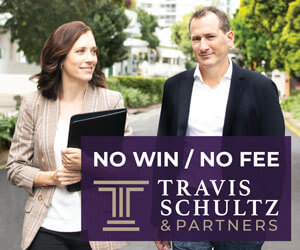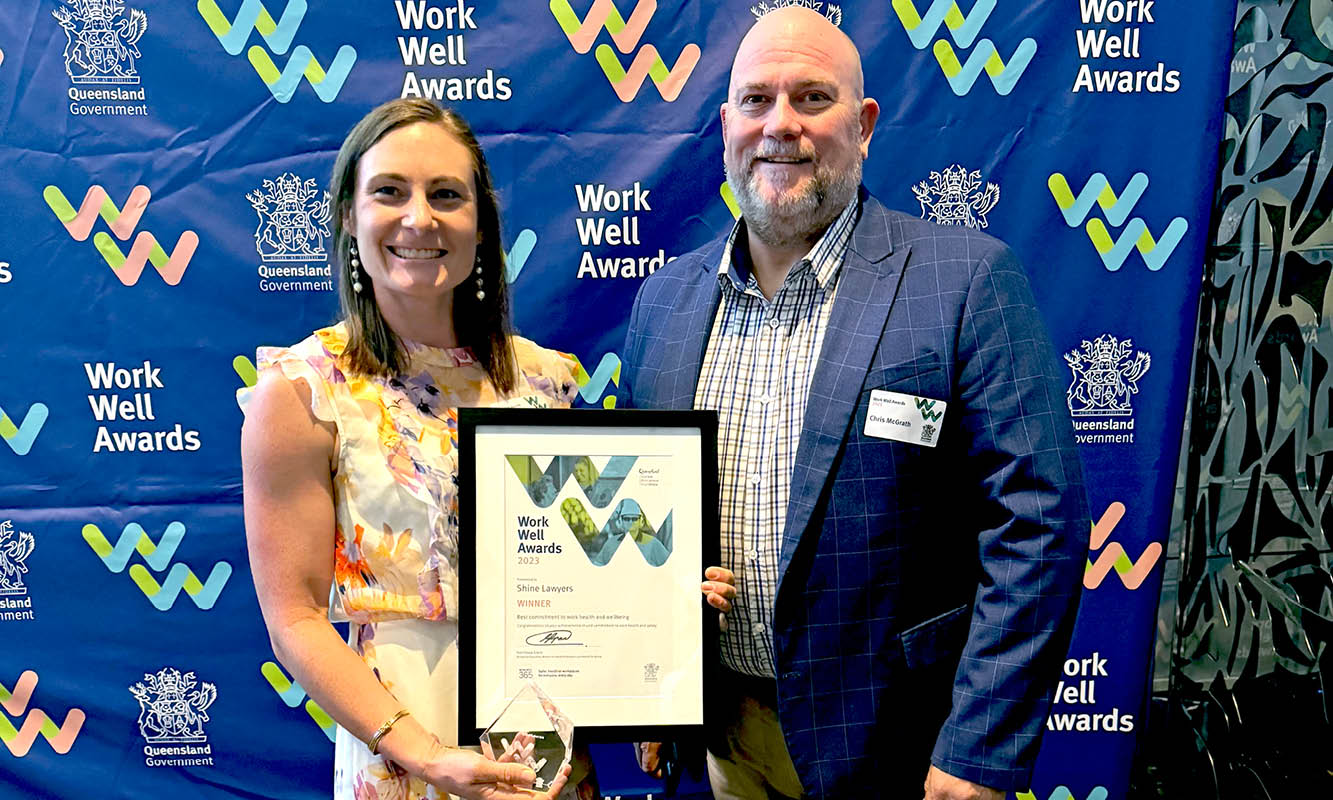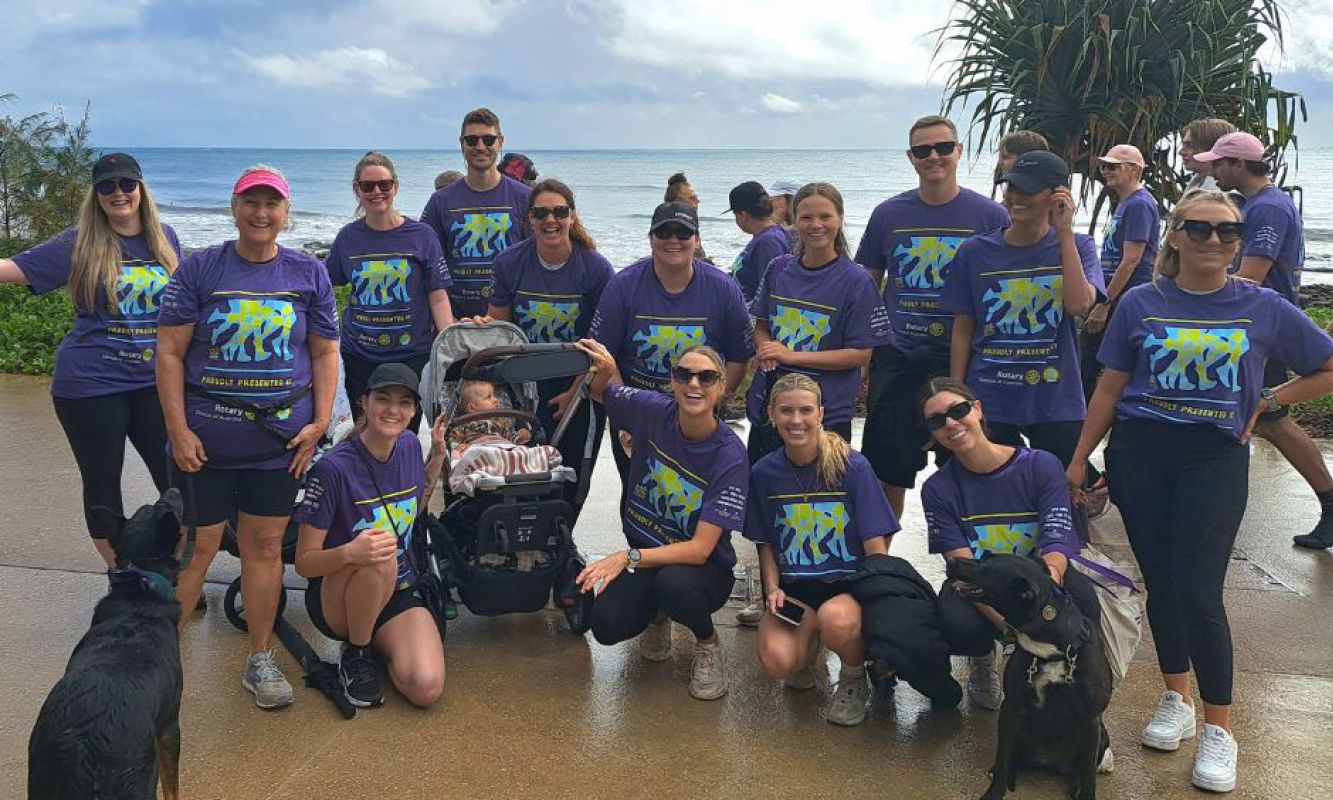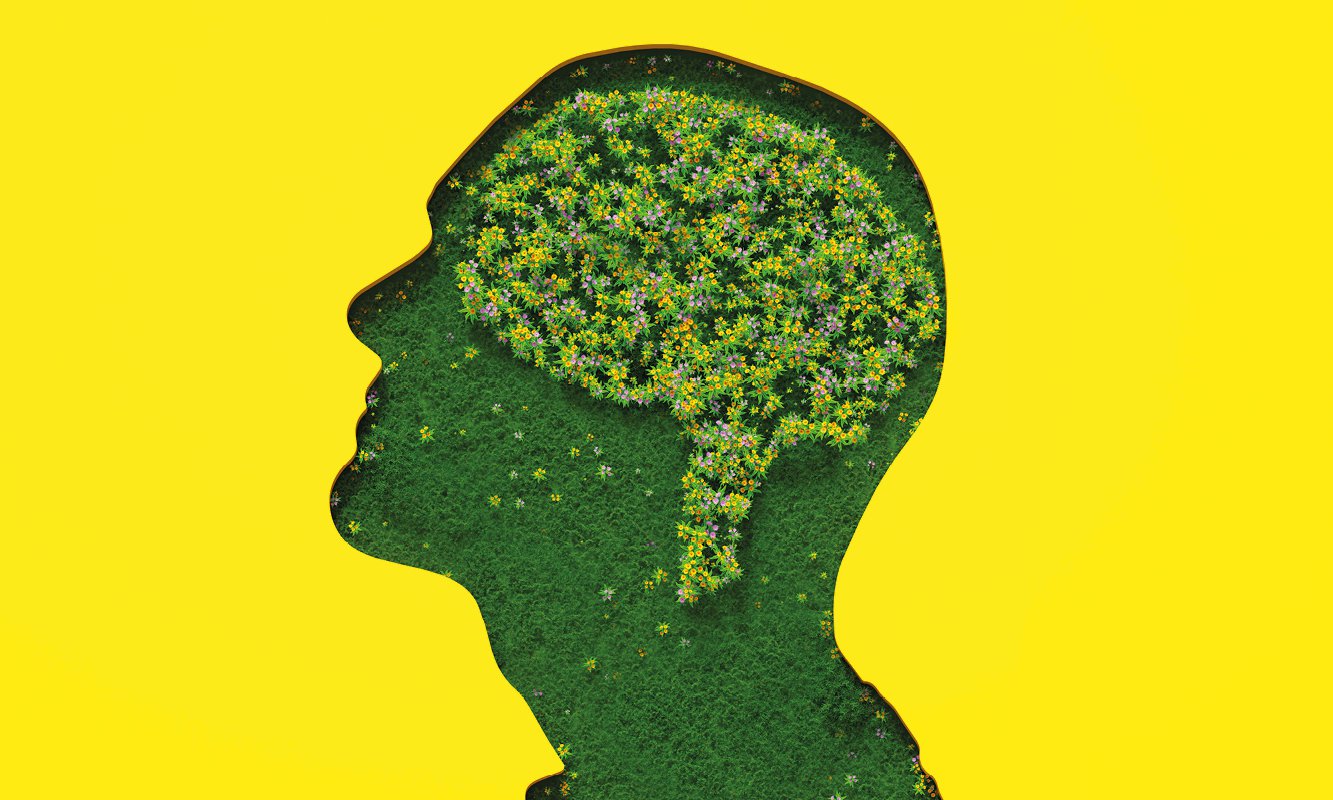Much time, energy and attention have been directed at diversity and inclusion initiatives in the legal profession in recent years.
Just in the last five years, we have seen the establishment of Pride in Law, countless diversity networks within individual firms, and the Queensland Law Society’s own pride network, its Equity and Diversity Committee, and Diverse Abilities Network. It’s been a welcome and crucial step towards true inclusivity in the profession.
These displays of inclusivity and celebrations of diversity are important in demonstrating that deliberate exclusion in the profession will not be tolerated. The evolution of legislative protections has also been instrumental in reducing such overt discrimination.
However, explicit discrimination is only part of the problem, and diverse groups are still underrepresented in the profession. Taking gender as one example, the split of senior practitioners in Queensland is skewed 3:1 to male practitioners.1
A Law Council of Australia study also found that the advancement of women (and other diverse groups) to positions of seniority has been hindered by the systemic and cultural features of the legal profession.2
Some commentators suggest that explicit discrimination has now been supplanted by ‘second generation’ discrimination in the form of implicit or unconscious bias.3 Although in principle we are genuinely committed to equal opportunity, in practice we may be discriminating without realising it. Are our diversity efforts being thwarted by a hidden barrier: unconscious bias? And how do we narrow the gap between the diverse profession we aspire to, and reality?
What is unconscious bias?
Implicit or unconscious bias occurs as part of our subconscious thought patterns. Research indicates that while our conscious mind processes about 40 pieces of information a second, our unconscious mind processes up to 40 million.4 In order to do so, our brains create ‘shortcuts’ – rapidly categorising similar people and objects into groups.
Derived from multiple sources from a young age, including from our parents, peers and life experiences, biases have a significant influence on our behaviour. These learned generalisations remain largely unchanged from childhood, becoming automatic and embedded in our thinking.5
Remarkably, our unconscious biases can directly contradict our conscious (egalitarian) views about the world and the groups of people within it. This is why we are typically unaware of the unconscious biases we hold, making it difficult to recognise when they unknowingly leak into our behaviour or decision-making.
Some of our unconscious biases can be harmless – for example, associating the colour green with grass. It is when our unconscious biases relate to protected attributes6 such as gender, race, age, sexuality, or impairment, that they can become the foundation for stereotypes, prejudice and discrimination7 and interfere significantly with what we as a profession are striving to achieve.
As lawyers, we can be particularly attuned to the discriminatory behaviour of others. But what about our own biases (which can lead to discrimination), which we aren’t even conscious of?
Why is unconscious bias a problem?
The existence of bias is not always obvious or tangible, though its effects can be far-reaching.8 From an individual perspective, unconscious biases held by a partner or supervisor can mean the difference between an early career lawyer receiving a job offer, promotion, or professional development opportunity, and missing out.
More broadly, unconscious bias can create structural impediments to a diverse practice and result in the demographics of the profession failing to reflect the demographics of the public which it serves.
How might unconscious bias affect your practice?
As lawyers, we are practised and trained in being objective. We apply objective tests when applying the law to our clients’ circumstances. However, although our conscious mind is well trained in thinking in this manner, our subconscious biases may be subverting our efforts to be truly objective – in the way we make decisions not only affecting our clients, but also our colleagues.
Bias may be more prevalent in your practice than you realise, with research indicating that firms underestimate its impact and overestimate the effectiveness of diversity policies.9 Areas where bias commonly creeps into the decision-making process include the following.
1. Clients
Judgment is inherent in the work of a lawyer. Interpreting evidence, facts, and legislation requires lawyers to exercise a level of judgment, and to advise clients and make decisions about case strategy accordingly.
It has been said that consequently, “there is no one concept that has more application to what we do as lawyers than unconscious bias”.10 Accepting that your judgment is typically influenced by your unconscious biases, it follows that your biases can negatively affect the substance of your work and in turn, your clients. Further, biases are understood to be more prevalent when multitasking or working under time pressure11 – circumstances frequently arising in the context of legal work.
In its more benign forms, you may exhibit unconscious bias towards the perspective of the party you represent,12 and so too might the experts you engage.13 More concerning, confirmation bias (seeking information that confirms our existing views and disregarding evidence that contradicts them)14 can have implications for your work, as can assumptions and generalisations. For example, if your client’s version of events and that of a witness conflict, your determination about the truth of each person’s evidence might be influenced by preconceived assumptions about that person.15
2. Early career lawyers
Bias has the potential to infect every stage of an individual’s career – but perhaps its detrimental effects can be most profound at the junior level.
Firstly, in gaining entry to the profession. A known barrier to achieving diversity in the legal profession is at the entry point. Given many of the skills required by lawyers are developed ‘on the job’, interviewers must rely on predictors of future success instead of demonstrated ability.16 Unfortunately, this involves assumptions about an individual’s traits and invites the risk of bias. Where these assumptions are unfounded and inaccurate, talented people of diverse backgrounds will struggle to enter the profession.
Secondly, in accessing opportunities. Mentoring junior members of the profession requires time and effort. Sadly, there is the potential for affinity bias to impact upon who senior members of the profession choose to make this investment in, and assign work to.17 If senior lawyers succumb to their natural inclination to invest in those that are most like themselves, early career lawyers from diverse groups will miss out on opportunities.18 Given 62% of Queensland’s early career lawyers are female, and 75% of pinnacle practitioners are male, attention needs to be devoted to keeping our early career female lawyers engaged throughout their careers.19
Thirdly, in progressing to more senior positions. Failing to receive opportunities in turn means early career lawyers in diverse groups will find it more difficult to demonstrate the competencies required for promotion.20 For instance, research suggests that men are more regularly perceived as wanting to become a partner, and accordingly, are offered support and cues to assist them in getting there.21 Similarly, attribution bias (making more favourable assessments of behaviours for those in your own ‘group’)22 can mean the capabilities of lawyers from diverse groups are assessed unfairly.
3. Senior lawyers
Opportunities for professional advancement and new leadership roles should be allocated based on merit, rather than the groups to which an individual belongs. Unfortunately, this is not always the reality, as bias can impede meritocratic decision-making. Studies have indicated that bias prevents women, for example, from accessing promotional opportunities.23
For instance, the tendency to expect that, because someone belongs to a group, they have certain characteristics24 may affect decisions about which staff are offered a role, denying them the opportunity to demonstrate they are capable of undertaking it. For example, if a woman who had children was not considered for a new role because her superiors assumed she would not want a position requiring travel.25
4. Prospective employees
Recruitment decisions by nature involve a level of judgment about a person which the firm may not yet know anything about. Unconscious biases can lead us to make unfounded assumptions about candidates, rather than a merit-based decision. For example, research shows that in order to secure a job interview, people with Chinese names must send in 68% more CVs when compared with Anglo-Saxon applicants.26
Affinity bias (gravitating towards those you perceive are similar to you)27 can lead you to hire people like yourself, resulting in a ‘mirror-tocracy’ rather than a meritocracy.28 For example, one study found that firms with female interviewing partners were more likely to hire female entry-level candidates.29 Age affinity bias has also lead to anti-discrimination proceedings in Queensland.30
5. Other practitioners
Your interactions with other practitioners are also susceptible to bias. For example, availability bias (defaulting to ‘top of mind’ information) such as automatically picturing a man as a partner and a woman as support staff31 might lead to misguided assumptions when attending a meeting at another firm.
With respect to your colleagues, not acknowledging contributions equally, or scheduling meetings at a time without regard for colleagues with parenting responsibilities or who have religious observances (for example, Friday prayers, Ramadan) can be automatic behaviours caused by bias. The accumulation of small or subtle behaviours which make people feel excluded32 can be just as impactful as important management decisions.
Five steps to bias-proofing your practice
Addressing unconscious bias is essential to creating a discrimination-free workplace,33 and is a significant step towards ensuring you realise the benefits of a diverse team.34 Although it may be near impossible to eliminate unconscious bias, there are steps you can take to mitigate its effect on your practice.
1. Become conscious of your unconscious biases
It is difficult to address your biases if you do not know what they are. Ignorance of the law is no excuse for violating it, so why should ignorance of our biases be an excuse for allowing them to perpetuate inequality? You can learn about your biases by:
- taking one of the internationally accepted tests such as the free Implicit Association Test offered by Harvard University35
- reflecting on your surprises.36 If you are surprised by an outcome, or a person’s actions, consider what your assumptions might have been which caused the mismatch between the assumed and the actual result. It’s possible that instead of being based on fact, your assumptions stemmed from unconscious bias.
As lawyers, it can be hard to accept that we too have biases, especially given we have chosen a career centred on social justice and helping others. Confronting your own biases can be uncomfortable, but so can being on the receiving end of a decision influenced by bias.
2. Educate staff about unconscious bias
Unconscious bias training can reduce the number of decisions affected by bias, and assist in establishing a culture of awareness in the firm which encourages change. Training generally canvasses:
- education (understanding what unconscious bias is)
- acceptance (recognising that everyone possesses biases and encouraging skepticism of your own objectivity)
- awareness (identifying your biases and highlighting their potential negative consequences)
- action (learning practical strategies to combat bias – such as an ‘if this, then that’ approach – for example, if I conclude that a candidate is not a good ‘fit’ for the firm, I will identify the specific reasons for the ‘poor fit’ and consider if they reflect biases).37
Training can also have side benefits for your practice, such as learning the pitfalls in your own thinking (leading to more effective legal decision-making);38 and understanding how other people (such as clients) process information and make decisions.39
There are many providers of unconscious bias training, including the Queensland Human Rights Commission40 and Symmetra, which, in conjunction with the Law Council of Australia, offers a program targeted at the legal profession and the effect of bias on the various legal and ethical decisions lawyers make daily.41
3. Redesign policies and processes
Consider processes which might be allowing bias to perpetuate, or that may appear impartial but produce unequal outcomes.42 Counteracting bias in this way can be powerful, because it means a decision-maker’s personal biases are less likely to translate into outcomes. For example:
- In recruitment processes, remove a person’s name, age and gender from CVs before providing them to the interviewer,43 ensure diverse representation on selection panels,44 and consider the wording in job descriptions to ensure they do not discourage certain applicants by referring to subconsciously gendered characteristics.45
- In performance review and remuneration procedures, seek feedback from a variety of supervisors (rather than relying on the perception of one), against transparent and measurable performance indicators. Although performance decisions may be inherently subjective, establishing an objective competency framework can help disrupt bias. Audit results across the team to ensure performance has been evaluated fairly and consistently across genders and for those of diverse abilities or who work flexibly.46
- Implement a formal mentoring program, to ensure lawyers receive equal opportunities for professional development and can achieve their potential.
- Diversify your people management team. A variety of viewpoints reduces the chances of unconscious bias driving decisions. A homogenous people management team will inevitably lead to lack of diversity in the employees they recruit.
4. Set goals
Research suggests that when people are motivated to act in a non-prejudiced manner, they may be able to override the effect of unconscious bias on their behaviour.47 Given biases are patterns of thought that have developed over a person’s lifetime, overcoming biases requires dedication. Commitment to a common goal can help you and your colleagues remain mindful of your biases. Becoming accountable by tracking the diversity of people applying, hired and promoted48 also means any negative trends identified can be addressed.
5. Seek feedback
Seek feedback from your internal diversity network about areas for change, establish employee focus groups,49 or engage a third party to conduct a real-time bias review. Such reviews might involve the consultant asking prompting questions, challenging assumptions during leadership meetings, or providing feedback afterward.50
Where to from here?
Improving inclusivity in the legal profession itself and in the way the lawyers within it interact with their clients requires a multifaceted approach. We should applaud our focus on diversity and inclusion initiatives, but not lose sight of the hidden barriers to achieving a diverse profession.
Unconscious bias might be unintentional, but it is pervasive, and we can still take steps to change it. Working at eliminating unconscious bias from your practice will complement the efforts of your diversity network and ensure you are reaping all of the benefits of a diverse workforce and client base.
This article appears courtesy of the Queensland Law Society Equity and Diversity Committee. Teagan Lewis is a senior associate at Corrs Chambers Westgarth.
Footnotes:
1Queensland Law Society Annual Report 2018-19, 25, qls.com.au/About_QLS/Queensland_Law_Society/Resources_publications/Corporate_documents/Annual_Reports/Annual_Report_2018-19.
2 Law Council of Australia, ‘National Attrition and Re-engagement Study (NARS) Report’ (2012), 5, 8, 23, 76, lawcouncil.asn.au/docs/a8bae9a1-9830-e711-80d2-005056be66b1/NARS%20Report.pdf.
3 Nicole Negowetti, ‘Implicit Bias and the Legal Profession’s “Diversity Crisis”: A Call for Self-Reflection’ [2015] (Spring) Nevada Law Journal 930, 932, scholars.law.unlv.edu/cgi/viewcontent.cgi?article=1600&context=nlj.
4 Karen Morley, Gender Worx, ‘Working Paper No.3 – Getting to grips with unconscious bias’ (2010), 4, insync.com.au/wp-content/uploads/Gender-Worx-Working-Paper-3-unconscious-bias.pdf.
5 Justin Levinson and Danielle Young, ‘Implicit Gender Bias in the Legal Profession: An Empirical Study’ (2010) 18:1 Duke Journal of Gender Law & Policy 1, 6, researchgate.net/publication/228145784_Implicit_Gender_Bias_in_the_Legal_Profession_An_Empirical_Study.
6 Section 7 of the Anti-Discrimination Act 1991 (Qld) prohibits discrimination on the basis of the attributes of sex, relationship status, pregnancy, parental status, breastfeeding, age, race, impairment, religious belief or religious activity, political belief or activity, trade union activity, lawful sexual activity, gender identity, sexuality, family responsibilities, and association with or relation to a person with one of the attributes.
7 The Law Society of England and Wales, ‘Influencing for impact: the need for gender equality in the legal profession’ (2019), 7, law.ox.ac.uk/sites/files/oxlaw/influencing_for_impact_-_the_need_for_gender_equaluty_in_the_legal_profession_-_women_in_leadership_in_law_report.pdf.
8 Ibid at 4.
9 Nicole Negowetti, ‘Implicit Bias and the Legal Profession’s “Diversity Crisis”: A Call for Self-Reflection’ [2015] (Spring) Nevada Law Journal 930, 954.
10 Ibid at 933, citing Jeff Adachi, ‘Implicit Bias, Address Before Mandatory Continuing Legal Education Conference on Criminal Litigation Ethics at U.C. Hastings College of the Law’ (2014) 65 Hastings Law Journal 1145, 1157.
11 Kathleen Nalty, ‘Strategies for Confronting Unconscious Bias’ (2017) The Federal Lawyer 26, 31, fedbar.org/wp-content/uploads/2017/01/Unconscious-Bias-pdf-2.pdf, citing Stepanikova, ‘Racial-Ethnic Biases, Time Pressure, and Medical Decisions’, [2012] (July) 53(3) Journal of Health and Social Behavior 329.
12 Justice Sydney Tilmouth QC, ‘Courtroom advocacy — Reflections of a trial judge’ (2012) 36 Australian Bar Review 31.
13 Unconscious bias has been acknowledged as a “well known characteristic of expert evidence”. See Miller Steamship Co Pty Ltd v Overseas Tankship (UK) Ltd (1963) NSWR 737 at 753 per Walsh J.
14 Mark Toner, Professionals Australia, ‘Unconscious Bias: What is it and why is it important in the STEM context?’, 2, professionalsaustralia.org.au/professional-women/wp-content/uploads/sites/48/2014/03/Unconcious-Gender-Bias-in-STEM-Mark-Toner.pdf.
15 Marilyn Bromberg, ‘Are courts’ backs to the future regarding artificial intelligence?’ (2018) 21(1) Internet Law Bulletin 2.
16 Nicole Negowetti, ‘Implicit Bias and the Legal Profession’s “Diversity Crisis”: A Call for Self-Reflection’ [2015] (Spring) Nevada Law Journal 930, 943 citing David Wilkins and Mitu Gulati, ‘Why Are There So Few Black Lawyers in Corporate Law Firms? An Institutional Analysis’, (1996) 84 California Law Review 493, 496.
17 Ronald Sandgrund, ‘Can We Talk? Bias, Diversity and Inclusiveness in the Colorado Legal Community’ [2016] (March) 45 The Colorado Lawyer 67, 73, burgsimpson.com/wp-content/uploads/2016/03/03-2016_InQ-Lawyer-Bias-Diversity.pdf; and Queensland Government, ‘Unconscious biases’, forgov.qld.gov.au/unconscious-biases.
18 Kathleen Nalty, ‘Strategies for Confronting Unconscious Bias’ (2017) The Federal Lawyer 26, 29.
19 Queensland Law Society Annual Report 2018-19, 25, qls.com.au/About_QLS/Queensland_Law_Society/Resources_publications/Corporate_documents/Annual_Reports/Annual_Report_2018-19..
20 Nicole Negowetti, ‘Implicit Bias and the Legal Profession’s “Diversity Crisis”: A Call for Self-Reflection’ [2015] (Spring) Nevada Law Journal 930, 943.
21 The Law Society of England and Wales, ‘Influencing for impact: the need for gender equality in the legal profession’ (2019), 10.
22 Kathleen Nalty, ‘Strategies for Confronting Unconscious Bias’ (2017) The Federal Lawyer 26, 28.
23 ictorian Equal Opportunity & Human Rights Commission, ‘Changing the rules > The experiences of female lawyers in Victoria’, (2012), 20 humanrightscommission.vic.gov.au/media/k2/attachments/Changing_the_Rules_Web.pdf_Final_1.pdf.
24 Australian Public Service Commission, ‘Unconscious bias’ (29 March 2019) apsc.gov.au/unconscious-bias, citing Australian National University, ‘Unconscious bias’ (2015).
25 Justin Levinson and Danielle Young, ‘Implicit Gender Bias in the Legal Profession: An Empirical Study’ (2010) 18:1 Duke Journal of Gender Law & Policy 1, 11; citing Joan Williams, ‘The Social Psychology of Stereotyping: Using Social Science to Litigate Gender Discrimination Cases and Defang the “Cluelessness” Defense’, (2003) 7 Employee Rights and Employment Journal 401, 439.
26 Australian National University, ‘Minorities find it harder to get jobs – RSSS Research Study’, (18 June 2009) cass.anu.edu.au/news/minorities-find-it-harder-get-jobs-rsss-research-study; Martijn Van der Kamp, Monash University, ‘How Unconscious Bias shapes your thinking (and what you can do about it)’, (18 October 2017) www2.monash.edu/impact/articles/leadership/how-unconscious-bias-shapes-your-thinking-and-what-you-can-do-about-it.
27 Australian Public Service Commission, ‘Unconscious bias’ (29 March 2019) apsc.gov.au/unconscious-bias, citing Australian National University, ‘Unconscious bias’ (2015).
28 Kathleen Nalty, ‘Strategies for Confronting Unconscious Bias’ (2017) The Federal Lawyer 26, 28.
29 Justin Levinson and Danielle Young, ‘Implicit Gender Bias in the Legal Profession: An Empirical Study’ (2010) 18:1 Duke Journal of Gender Law & Policy 1, 15; citing Elizabeth Gorman, ‘Gender Stereotypes, Same-Gender Preferences, and Organizational Variation in the Hiring of Women: Evidence from Law Firms’, (2005) 70 American Sociological Review 702, 705-06.
30 See Virgin Blue Airlines Pty Ltd v Stewart [2007] QSC 075 per Moynihan J at [33] and the decision at first instance, Hopper & Ors v Virgin Blue Airlines Pty Ltd [2005] QADT 28.
31 Kathleen Nalty, ‘Strategies for Confronting Unconscious Bias’ (2017) The Federal Lawyer 26, 28.
32 The Law Society of England and Wales, ‘Influencing for impact: the need for gender equality in the legal profession’ (2019), 4.
33 Queensland Human Rights Commission, ‘Unconscious Bias’ (2020), qhrc.qld.gov.au/__data/assets/pdf_file/0018/24660/QHRC_trainingoverview_UnconsciousBias.pdf.
34 See a discussion of some of these benefits in the Law Society of New South Wales, ‘Diversity and Inclusion in the Legal Profession: The Business Case’ (June 2017), lawsociety.com.au/sites/default/files/2018-03/DIC%20business%20case_0.pdf.
35 Project Implicit, implicit.harvard.edu/implicit.
36 Ronald Sandgrund, ‘Can We Talk? Bias, Diversity and Inclusiveness in the Colorado Legal Community’ [2016] (March) 45 The Colorado Lawyer 67, 72, burgsimpson.com/wp-content/uploads/2016/03/03-2016_InQ-Lawyer-Bias-Diversity.pdf; Kathleen Nalty, ‘Strategies for Confronting Unconscious Bias’ (2017) The Federal Lawyer 26, 30.
37 Nicole Negowetti, ‘Implicit Bias and the Legal Profession’s “Diversity Crisis”: A Call for Self-Reflection’ [2015] (Spring) Nevada Law Journal 930, 956.
38 Kathleen Nalty, ‘Strategies for Confronting Unconscious Bias’ (2017) The Federal Lawyer 26, 27.
39 Bar Association of San Francisco, ‘Addressing Bias in the Legal profession’ (8 January 2014), blog.sfbar.org/2014/01/08/addressing-bias-in-the-legal-profession-self-study-cle.
40 Queensland Human Rights Commission, qhrc.qld.gov.au/training/our-training-courses#ub.
41 Symmetra, diversityinlaw.com.au.
42 Nicole Negowetti, ‘Implicit Bias and the Legal Profession’s “Diversity Crisis”: A Call for Self-Reflection’ [2015] (Spring) Nevada Law Journal 930, 958.
43 The Law Society of New South Wales, ‘Diversity and Inclusion in the Legal Profession: The Business Case’ (June 2017) 7, lawsociety.com.au/sites/default/files/2018-03/DIC%20business%20case_0.pdf; The Law Society of England and Wales, ‘5 steps to reduce unconscious bias in your workplace’ (9 April 2018) lawsociety.org.uk/news/blog/5-steps-to-reduce-unconscious-bias-in-your-workplace; and Queensland Government, ‘Unconscious biases’, forgov.qld.gov.au/unconscious-biases.
44 Australian Public Service Commission, ‘Unconscious bias’ (29 March 2019), apsc.gov.au/unconscious-bias, citing Australian National University, ‘Unconscious bias’ (2015).
45 Lattice, ‘How to Reduce Unconscious Bias at Work’ (26 October 2019), lattice.com/library/how-to-reduce-unconscious-bias-at-work.
46 Dr Katie Spearritt, ‘Could unconscious gender bias be impacting your performance assessments?’ (21 February 2020), diversitypartners.com.au/new-blog.
47 Kristin Lane, Jerry Kang and Mahzarin Banaji, ‘Implicit Social Cognition and Law’ (2017) 3 Annual Review of Law and Social Science 427, 437, annualreviews.org/doi/full/10.1146/annurev.lawsocsci.3.081806.112748; Jerry Kang et al, ‘Implicit Bias in the Courtroom’ (2012) 59 UCLA Law Review 1124, 1174 uclalawreview.org/pdf/59-5-1.pdf; Kathleen Nalty, ‘Strategies for Confronting Unconscious Bias’ (2017) The Federal Lawyer 26, 30.
48 Jerry Kang et al, ‘Implicit Bias in the Courtroom’ (2012) 59 UCLA Law Review 1124, 1178; Justin Levinson and Danielle Young, ‘Implicit Gender Bias in the Legal Profession: An Empirical Study’ (2010) 18:1 Duke Journal of Gender Law & Policy 1, 37; Law Society of England and Wales, ‘Influencing for impact: the need for gender equality in the legal profession’ (2019), 31, 33.
49 Queensland Government, ‘Unconscious biases’, forgov.qld.gov.au/unconscious-biases.
50 Dr Katie Spearritt, ‘Real Time Bias Review – helping leaders assess performance and promotions more objectively’ (16 August 2019), diversitypartners.com.au/new-blog.













Share this article